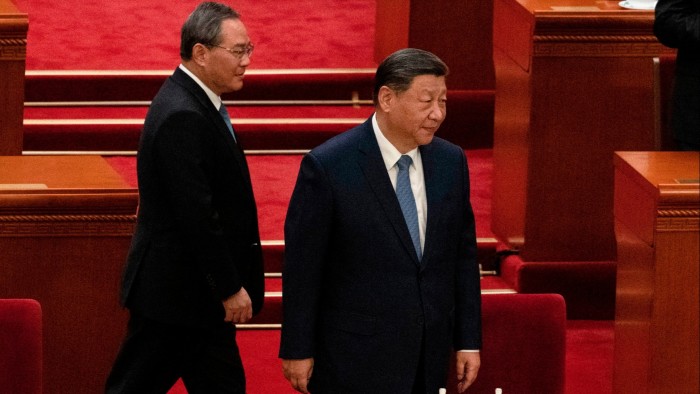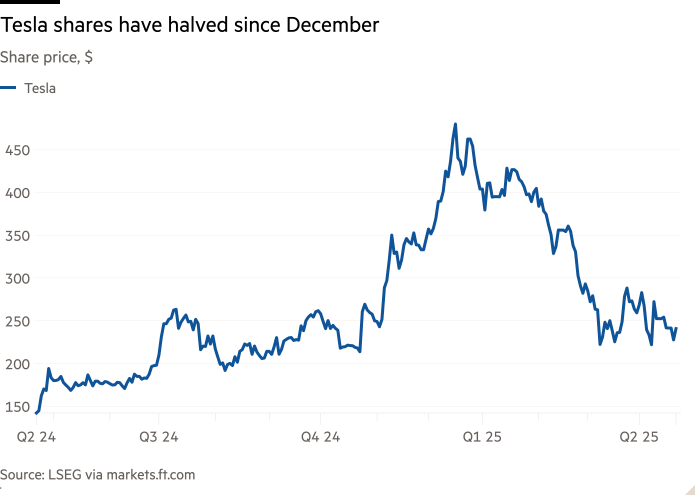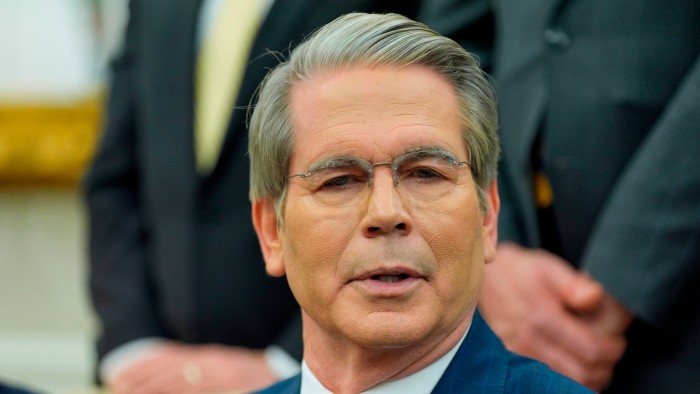China sets annual economic growth target of 5%

Stay informed with free updates
Simply sign up to the Chinese economy myFT Digest — delivered directly to your inbox.
China has announced an ambitious GDP growth target of 5 per cent for 2025 despite a slowdown in the domestic economy and mounting trade tensions with the US.
The figure, which was in line with analyst forecasts and matched Beijing’s targets in the previous two years, was announced in the government’s annual “work report”, a review of its achievements last year and economic goals and policies for 2025.
Premier Li Qiang, China’s number-two official, delivered the report on Wednesday before thousands of delegates gathered in Beijing’s Great Hall of the People for the annual session of the National People’s Congress, China’s rubber stamp parliament.
The 5 per cent target was necessary “to stabilise employment, prevent risks and improve people’s wellbeing” as well as meet “long-term development goals”, the report said.
Beijing also announced that its 2025 defence budget would increase by a nominal 7.2 per cent, in line with previous years, though analysts believe China’s actual military spending is much higher.
Hong Kong’s Hang Seng China Enterprises index rose 2.5 per cent in morning trading on Wednesday after the work report’s release, while China’s CSI 300 index of Shanghai- and Shenzhen-listed stocks edged up 0.1 per cent.
While the opening of the NPC session is seen as an annual highlight for the premier, who is in charge of China’s cabinet, President Xi Jinping presides over the gathering along with other members of the Chinese Communist party’s elite seven-member standing committee.
The growth target indicated Beijing’s determination to boost its economy despite another round of tit-for-tat tariff measures with the US this week.
The US has imposed additional 20 per cent tariffs on Chinese exports since President Donald Trump took office in January and has threatened further measures. China has retaliated by targeting US agricultural and energy exports as well as imposing export controls and security measures on American companies.
The document also set a budget deficit target for the central government of 4 per cent of GDP, compared with 3 per cent previously, a signal that Beijing plans to unleash more fiscal spending to combat slower growth.
The total or “augmented” state budget, including for local governments, is several times higher than the headline central government figure would suggest, analysts said.
The work report targeted inflation this year of 2 per cent, down from 3 per cent and the lowest such figure since 2003, an admission of deep deflationary pressures sweeping the economy due to weak domestic demand and the collapse of the property sector.
“The 5 per cent growth target seems an aspiration rather than a serious policy goal in view of the economy’s cyclical and structural weaknesses set against the backdrop of an increasingly hostile external environment,” said Eswar Prasad, an economist and China expert at Cornell University.
“China needs a package of carefully targeted fiscal and monetary policy measures, but these must be accompanied by reform measures to reinvigorate productivity and reorient the government’s attitude towards private enterprise.”
To stimulate the economy, the work report said the government would “adopt a more proactive fiscal policy”.
It listed a broad range of economic goals, from building a “modernised industrial system” and promoting technological innovation to stabilising the property and stock markets and maintaining “social harmony”.
China has previously said economic growth last year was 5.2 per cent, beating the official target for a second year in a row as Beijing stepped in with increased bond issuance to stimulate the economy and help cash-strapped local authorities.
Additional reporting by Wenjie Ding in Beijing and Arjun Neil Alim in Hong Kong






